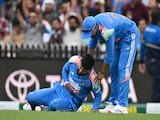The Union Health Ministry's recently released National Health Accounts (NHA) estimates for 2020-21 and 2021-22 reveal several positive trends for India. There has been a substantial reduction in out-of-pocket expenditure (OOPE) in healthcare. Over the past decade, OOPE as a percentage of total health expenditure (THE) has sharply declined from 64.2% in 2013-14 to 39.4% in 2021-22. This trend indicates a marked shift towards greater financial protection for citizens, as government interventions such as Ayushman Bharat Pradhan Mantri Jan Arogya Yojana (PMJAY), the Free Dialysis scheme, and other health programmes have increasingly shouldered the burden of healthcare costs. The introduction and expansion of these schemes have resulted in savings of more than ₹1 lakh crore for beneficiaries, highlighting the government's proactive measures in alleviating the financial stress faced by households.
The drop in OOPE is a significant achievement in India's march towards Universal Health Coverage (UHC). The improved methodology for NHA estimates over the years has resulted in a more accurate and robust understanding of the government's healthcare expenditure. The reduction in OOPE also reflects the broader policy focus on expanding access to healthcare while reducing the financial strain on individuals.
One of the most noteworthy aspects of the NHA estimates is the consistent increase in government health expenditure (GHE) as a percentage of both GDP and overall government spending. Between 2014-15 and 2021-22, GHE has risen from 1.13% of GDP to 1.84%, and its share of general government expenditure has grown from 3.94% to 6.12%. In per capita terms, government health spending has tripled, from ₹1,108 to ₹3,169 during the same period, reflecting the government's growing commitment to public health.
In the provision of healthcare services, government hospitals account for Rs. 1,49,900 crores (18.99% of current health expenditure or CHE), while private hospitals contribute Rs. 2,12,948 crores (26.96% of CHE). Expenditures on other government providers, such as Primary Health Centers (PHCs), dispensaries and family planning centres, amount to Rs. 56,477 crore (7.15% of CHE). Other private providers, including private clinics, account for Rs. 30,080 crore (3.81% of CHE), while providers of patient transport and emergency rescue services contribute Rs. 28,906 crore (3.65% of CHE). Medical and diagnostic laboratories make up Rs. 26,238 crore (3.32% of CHE), pharmacies account for Rs. 1,52,910 crore (19.35% of CHE), and providers of preventive care contribute Rs. 82,325 crore (10.42% of CHE). Additionally, Rs. 27,380 crore (3.48% of CHE) are allocated to health system administration, and other healthcare providers account for Rs. 21,759 crore (2.76% of CHE).
Regarding the services consumed, inpatient curative care represents Rs. 2,99,587 crore (37.94% of CHE), while outpatient curative care accounts for Rs. 1,20,816 crore (15.30% of CHE). Patient transportation services total Rs. 28,906 crore (3.65% of CHE), laboratory and imaging services amount to Rs. 26,238 crore (3.32% of CHE), and prescribed medicines account for Rs. 1,26,225 crore (15.98% of CHE). Preventive care makes up Rs. 1,07,048 crore (13.55% of CHE), and traditional, complementary, and alternative medicine (TCAM) expenditures are 3.59% of CHE. The overall current health expenditure is distributed among primary care (46%), secondary care (33%), and tertiary care (16%), with the government's spending weighted more towards primary care (50%).
This rise in government spending on health has important long-term implications for India's healthcare system. First, it enhances the country's ability to tackle not just immediate health crises, such as the COVID-19 pandemic, but also long-term challenges like non-communicable diseases (NCDs), which are on the rise. Higher public spending on health can also translate into improved infrastructure, better-trained healthcare workers, and more accessible healthcare services, particularly in rural and underserved regions. Over time, this can lead to a stronger, more resilient healthcare system capable of handling both routine care and emergencies.
A critical component of the decline in OOPE has been the rise in Social Security Expenditure (SSE) on healthcare, which includes government-funded health insurance and social health programmes. The SSE's share of THE has increased from 5.7% in 2014-15 to 8.7% in 2021-22. This expansion of social security nets ensures that individuals are protected from catastrophic health expenditures and do not face financial ruin when accessing essential healthcare services. With more comprehensive health insurance coverage and financial safeguards in place, fewer households will be pushed into poverty due to healthcare costs, which have historically been a major concern in India.
Looking ahead, the continued reduction in OOPE and increased government health spending could have significant future implications for India's health outcomes and socio-economic development. As the government continues to invest in healthcare, it is expected that health indicators, such as life expectancy, infant and maternal mortality rates, and overall morbidity, will improve. This, in turn, can lead to a more productive workforce, fewer days lost to illness, and greater economic growth. Improved health outcomes are also likely to reduce the overall healthcare burden on the economy, as preventive care and early intervention become more accessible, reducing the need for costly tertiary treatments.
Furthermore, these trends suggest a gradual shift towards a healthcare system that prioritises financial protection and equity. As the government continues to expand its role in healthcare financing, it will be crucial to ensure that these gains are not just maintained but further strengthened. Policy focus should now pivot towards enhancing the quality of care, improving efficiency in healthcare delivery, and ensuring that healthcare services remain accessible and affordable for all. This will require continued investment in healthcare infrastructure, human resources, and technology to bridge the gaps in care quality across different regions and socio-economic groups.
The NHA estimates for 2020-21 and 2021-22 highlight a positive trajectory for India's healthcare financing system, with declining OOPE, rising government health expenditure, and a more robust social security framework. These trends are promising, but sustaining and building on them will require continued political will, smart policy interventions, and a focus on equity and quality of care. The government's commitment to increasing public health investments provides a solid foundation, but future efforts must ensure that these resources are effectively utilised to improve health outcomes and ensure that every citizen, regardless of their socio-economic status, has access to affordable, high-quality healthcare.
(Bibek Debroy is Chairman, Economic Advisory Council to the Prime Minister, and Aditya Sinha is OSD, Research, Economic Advisory Council to the Prime Minister)
Disclaimer: These are the personal opinions of the author















